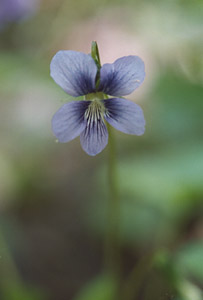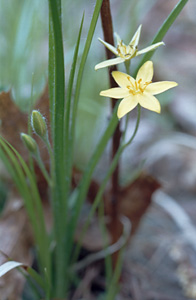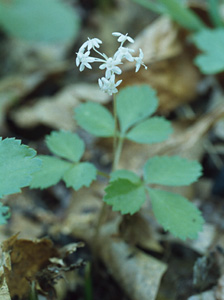
Marsh Blue Violet, Violet family (Violaceae), Native


|

Like many but not all violets, marsh violet can actually produce two kinds of blossoms. The first kind is the showy springtime flower that everyone notices, including pollinating insects. The second kind is a smaller, inconspicuous blossom that looks something like a developing bud and typically appears in the summer. This second kind never opens but fertilizes itself and also bears seeds later in the season. It serves as a sort of insurance policy, allowing the violet to produce seeds even when cross-pollination does not take place. Various other kinds of plants besides violets use this insurance policy.
Like other violets, the young leaves have been used in salads, the flowers have been candied, and the
dried leaves used to make tea.
Stargrass, Daffodil or Amaryllis family (Amaryllidaceae), Native


|



|

Dwarf gingseng is unusual because the plants can produce male flowers one year and female flowers in another year. Possibly because seeds and fruit take a lot of energy to make, the largest plants are usually the ones that produce female flowers. Somewhat smaller plants usually produce male flowers. After bearing its yellowish berries, a plant usually has male flowers the next year. It has been estimated that every year about one fourth to one third of the plants in an area switch from producing one kind of flower to the producing the other.
The tubers have served as food, either raw or cooked. Native Americans made a tea from the plant to treat an assortment of ills. They also chewed the root for headaches and other problems.
Dwarf ginseng is not the same as American ginseng (Panax quinquefolius), a larger plant that has
become scarce due to over-picking. The leaves of American ginseng have five parts instead of three,
like dwarf ginseng. American ginseng has been used as a substitute for yet another
gingseng, Asian gingseng ( Panax gingseng), which has traditionally been widely used in China as
a medicine, a tonic for increasing endurance, and an aphrodisiac.
| show TOC frame | Table of Contents | 
|
| Home / Contact | ||
Copyright © Anne A. Reid, 1999-2002. Photographs copyright © Garry K. Kessler, 1999-2002. | ||